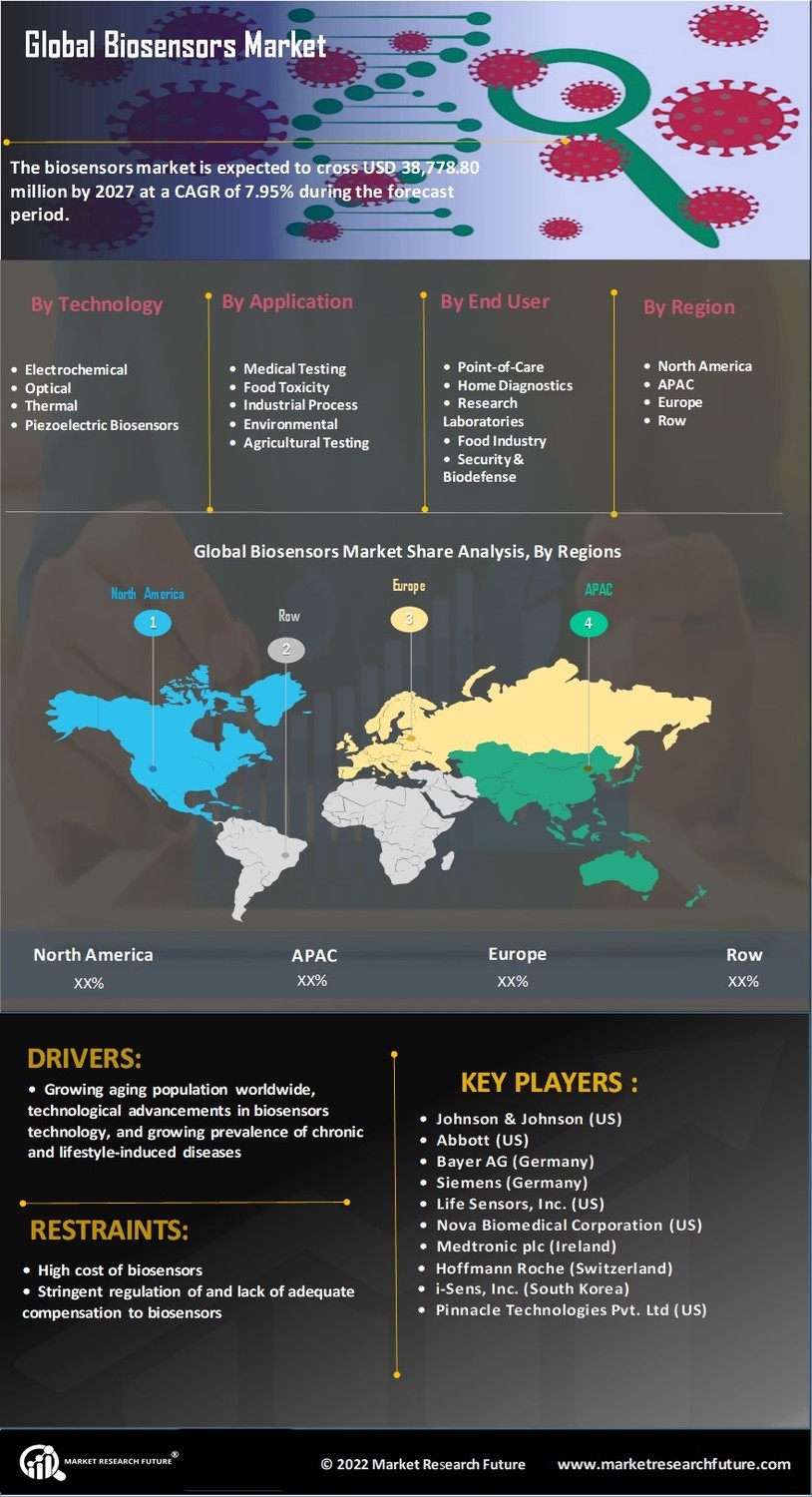Biosensor Market Summary
As per MRFR analysis, the Biosensors Market Size was estimated at 26.22 USD Billion in 2024. The Biosensors industry is projected to grow from 28.25 USD Billion in 2025 to 59.43 USD Billion by 2035, exhibiting a compound annual growth rate (CAGR) of 7.72 during the forecast period 2025 - 2035.
Key Market Trends & Highlights
The Biosensors Market is experiencing robust growth driven by technological advancements and increasing demand for point-of-care testing.
- North America remains the largest market for biosensors, driven by advanced healthcare infrastructure and innovation.
- The Asia-Pacific region is the fastest-growing market, fueled by rising healthcare investments and a focus on health and wellness.
- The healthcare segment dominates the market, while the food safety segment is emerging rapidly due to heightened safety standards.
- Technological innovations in biosensors and the rising prevalence of chronic diseases are key drivers propelling market expansion.
Market Size & Forecast
| 2024 Market Size | 26.22 (USD Billion) |
| 2035 Market Size | 59.43 (USD Billion) |
| CAGR (2025 - 2035) | 7.72% |
Major Players
Abbott Laboratories (US), Roche Diagnostics (CH), Siemens Healthineers (DE), Medtronic (US), Thermo Fisher Scientific (US), Johnson & Johnson (US), Biosense Webster (US), Dexcom (US), Acon Laboratories (US)


















Leave a Comment